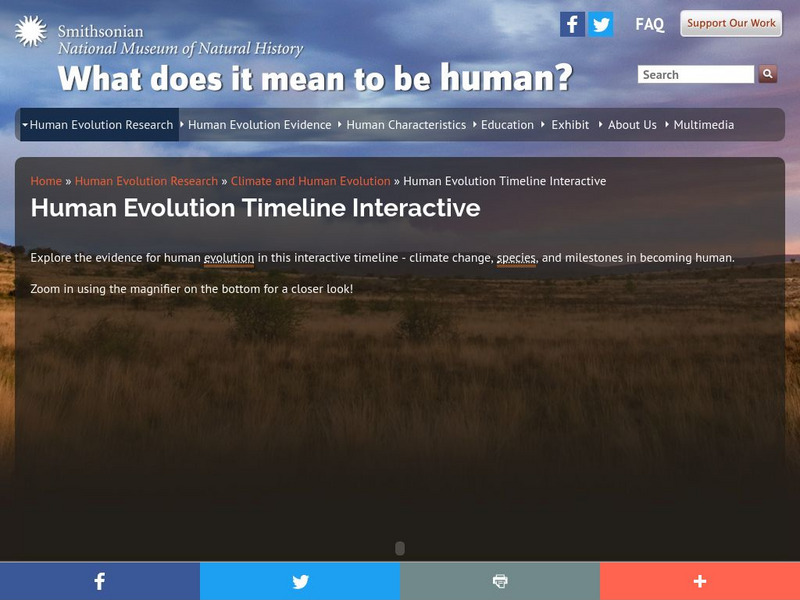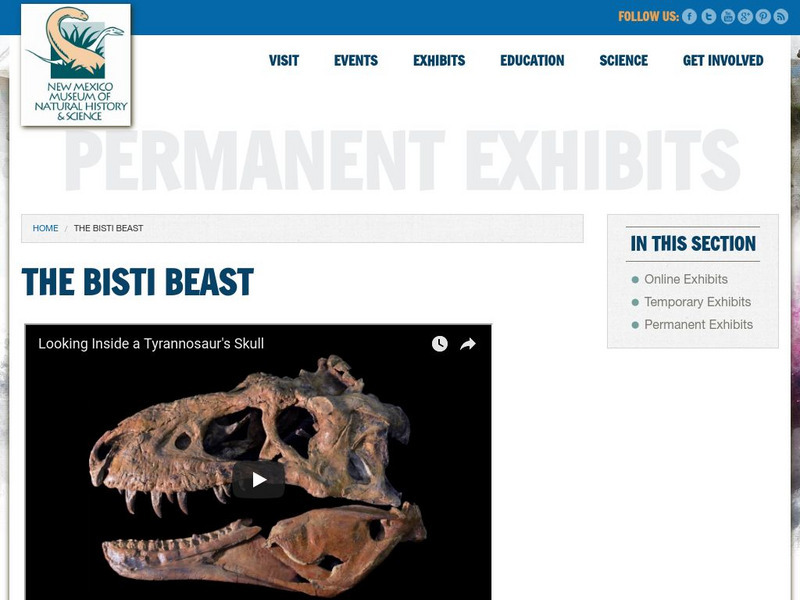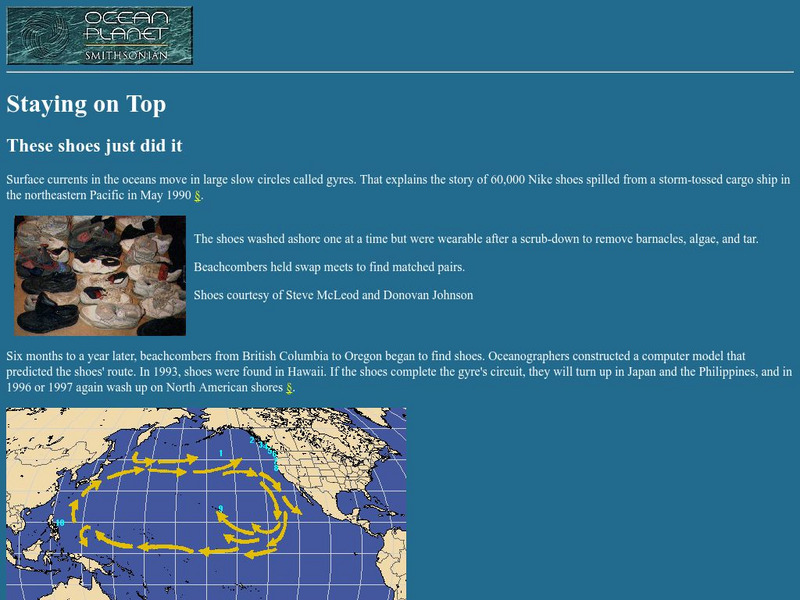Carnegie Museum of Natural History
Carnegie Museum of Natural History: Lewis and Clark
This resource describes how Lewis and Clark described various animals two centuries ago.
Smithsonian Institution
National Museum of Natural History: Smithsonian Expeditions in Latin America
This site from the Smithsonian Institution gives information on expeditions of Smithsonian scientists to Latin America. The site has great pictures and gives a different perspective on the region.
Smithsonian Institution
National Museum of Natural History: Global Volcanism Program
The Global Volcanism Program website provides documentation, understanding and general information about global volcanic activity.
Smithsonian Institution
National Museum of Natural History: Random Strategies in Archeology
Students participate in a three-part archeological interpretation activity. First, they learn the principles of archaeology and the importance of material culture, and then they question ideas and interpret artifact evidence. Finally,...
Smithsonian Institution
National Museum of Natural History: Canela Body Adornment
Among the Canela of Brazil, adorning the body enhances appearance, signals changes in social identity, and expresses culturally prescribed values. View vivid photos of the different cosmetic treatments men and women undergo.
Smithsonian Institution
National Museum of Natural History: Human Evolution Timeline Interactive
Explore the evidence for human evolution in this interactive timeline - climate change, species, and milestones in becoming human. During the period of human evolution, the Earth's climate has fluctuated between warm and cold. Some of...
American Museum of Natural History
American Museum of Natural History: Carl Sagan and the Quest for Life in the Universe
A brief biography of American astronomer and science advocate Carl Sagan.
Other
New Mexico Museum of Natural History and Science: The Bisti Beast
The Bisti Beast's official name is Bistahieversor sealeyi. It is a tyrannosaur dinosaur, related to the Albertosaurus and the Daspletosaurus, and found in New Mexico. These two pages describe the discovery and reconstruction of this...
Smithsonian Institution
National Museum of Natural History: Homo Habilis
This resource provides graphics, as well as explanation, of the remains of Homo habilis.
Smithsonian Institution
National Museum of Natural History: Ocean Planet: Biological Roulette: Alien Species
Click on the roulette wheel and see how some alien species were introduced into the United States and the effect they have had on our country. This is part of an archived Smithsonian exhibit.
Smithsonian Institution
National Museum of Natural History: Ocean Planet: Oil Pollution
Source provides key facts and figures as well as pictures on various oil accidents. Site information is divided up into three categories: Sources, Accidents and Cleanups. This is part of an archived Smithsonian exhibit.
Smithsonian Institution
National Museum of Natural History: Ocean Planet: Staying on Top
This is the story of the infamous Nike shoes that washed off a cargo ship. The shoes later showed up along beaches, giving oceanographers another clue as to how ocean currents move.
Smithsonian Institution
National Museum of Natural History: Paleobiology: Blast From the Past!
Examine evidence of a deep-sea core that provides evidence of an asteroid impact sixty-five million years ago, which may have contributed to the extinction of the dinosaurs.
Smithsonian Institution
National Museum of Natural History: Paleobiology: Green River Fossil Collections
Search the collection of 35,000 fossiliferous rocks found within the Green River Formation of Colorado and Utah. View some of these 50 million year old insect fossils in a linked slide show.
Idaho State University
Idaho Museum of Natural History: Beaver
This competent site delves into the physical characteristics, range, habitat, diet, ecology, reproduction, and conservation status of the American beaver.
Smithsonian Institution
National Museum of Natural History: Paleobiology: Green River Insects
Interactive photo search of the collection of 35,000 fossiliferous rocks found within the Green River Formation of Colorado and Utah.
American Museum of Natural History
American Museum of Natural History: O Logy: Beautiful Breeds
There are many breeds of horses around the world. Eighteen breeds are featured in this reference resource. Understand how horses are measured, their coat colors, and body types.
American Museum of Natural History
American Museum of Natural History: O Logy: Beautiful Breeds: Miniature Horse
American horse breed, miniture horses, are illustrated and facts about these mammals are provided. Choose Miniature Horse from the list on the right.
American Museum of Natural History
American Museum of Natural History: O Logy: Beautiful Breeds: Morgan
A domestic horse breed from New England, the Morgan, is identified. Get the facts on this beautiful breed. Choose Morgan from the list on the right.
American Museum of Natural History
American Museum of Natural History: O Logy: Beautiful Breeds: Hanoverian
Get facts and images of a German breed of horse, the Hanoverian. Choose Hanoverian from the list on the right.
American Museum of Natural History
American Museum of Natural History: O Logy: Beautiful Breeds: Lusitano
Facts and images of the Portuguese Lusitano horse breed. Choose Lusitano from the list on the right.
Smithsonian Institution
National Museum of Natural History: Postmodernism and Its Critics
Very thorough overview of Postmodernism theory and this includes Deconstruction. Includes basic premises and the leading figures in the movement.
Smithsonian Institution
National Museum of Natural History: Department of Entomology
Search the National Insect Collection, one of the largest entomological collections in the world with over 35 million insect specimens. In addition, learn how insect research is conducted, who is doing the research, read past...
Smithsonian Institution
National Museum of American History: Jamestown, Quebec, Santa Fe: Three North American Beginnings
Explore the origins of Canada and the United States as Jamestown, Quebec, and Santa Fe celebrate their 400th anniversary.




















